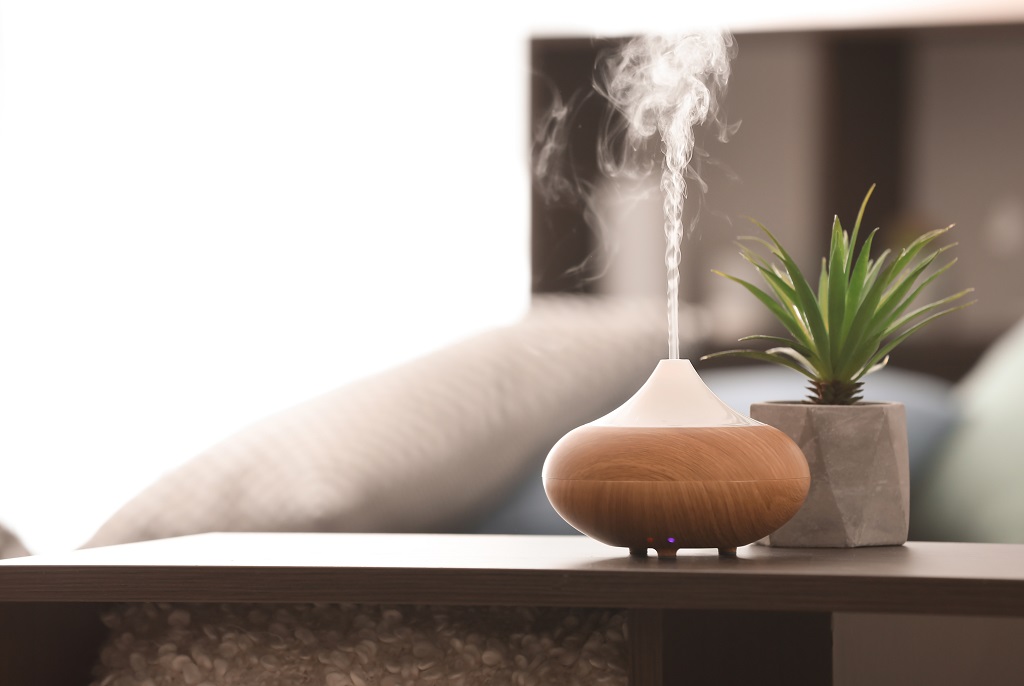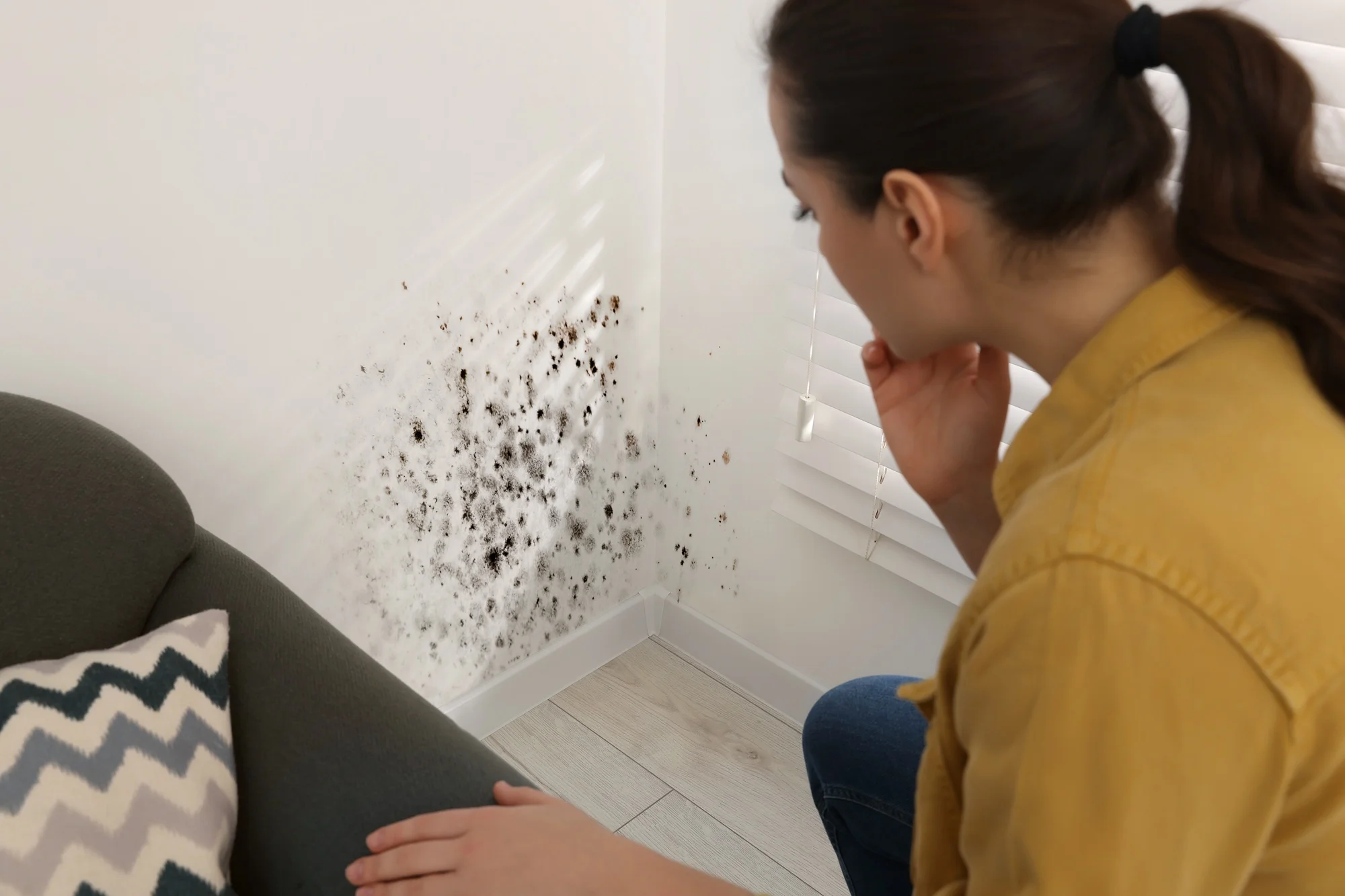
How to Clean Your House If You Have a Dust Allergy
It’s incredible to think critters about one-quarter of a millimeter are responsible for causing asthma and allergies for many people around the world. Dust mite cleaning or allergy cleaning can make a considerable difference to the air quality of your home and reduce allergic reactions.
The only difference between regular cleaning and dust allergy cleaning is a focus on steam cleaning, frequently airing and washing upholstery and linen, as well as keeping temperature and humidity low. With loads of experience in allergy house cleaning services, we’ve put together some helpful tips to decrease the number of dust mites in your home.
For more advice on cleaning, you can check out our 20 cleaning tips and tricks.
What Is a Dust Mite Allergy?

Dust mites are microscopic bugs that live on dead skin cells shed by humans and their pets. They live on all the world’s continents, except the Antarctic, where it is too cold for them to survive. According to the American Lung Association, and contrary to widespread belief, they are not parasites because they don’t bite, sting, or burrow into human bodies.
Under the microscope, they look like a cross between a spider and a crab, and the thought of them often makes people feel squeamish. But, technically, they are like a microscopic cleaning crew eradicating dead skin cells. To give you an idea: Humans shed around 500 million dead skin cells a day, which is enough to feed a few thousand mites.
Dust mites are relatively harmless, but their “dung” contains a protein that is a common allergen for many people. It’s sometimes challenging to distinguish if someone is suffering from a generic dust allergy or one that’s dust-mite related, but dust is typically what causes allergens in the first place. So, what exactly is an allergen, and how does it cause a dust allergy?
An allergen is a type of antigen that produces an aggressive immune response, in which the immune system fights off a “threat” that would otherwise be harmless to the body. And an antigen is any substance that causes the immune system to produce antibodies against it. In the case of dust mites, some people’s immune systems react to the protein they excrete, which causes allergies and inflammation.
Dust mites have cohabited with humans for centuries. They prefer warm, humid, dusty, dark, and moist places, so keeping your home as dust-free as possible is a must. Fiber surfaces like clothing, upholstery, and bedding where dead skin cells can accumulate are often filled with mites.
What Are the Symptoms of a Dust Allergy?
While dust mites have been associated with dermatological and respiratory allergies such as eczema and asthma, there is no definitive sign that they trigger symptoms. Asthma, for example, may be triggered by a range of allergens, such as mold or fluff from hair, fur, or feathers. Even so, this provides even greater motivation for proper dust allergy cleaning.
Common symptoms of dust mite allergy include:
- Cough
- Postnasal drip
- Itchy skin
- Itchy nose, mouth, or throat
- Itchy, red, or watery eyes
- Stuffy nose
- Runny nose
- Sneezing
If you have asthma that’s triggered by a dust allergy, you may experience:
- Chest tightness or pain
- Difficulty breathing
- A whistling or wheezing sound upon exhalation
- Difficulty sleeping due to shortness of breath, coughing or wheezing
Allergy House Cleaning Tips

Dust mites are virtually impossible to get rid of, but there are things you can do that help remove allergens from home and reduce the severity of dust allergies.
Lower Temperature and Humidity
Dust mites thrive in temperatures between 75 °F and 80 °F, where the relative humidity is around 70% to 80%. Anything outside this range won’t kill them but can reduce their breeding. Keeping the humidity below 50% will also have a significant effect on their population growth. If your home’s humidity is higher than 50%, try circulating air through vents, fans, and opening windows, or use an HVAC system or dehumidifier.
Vacuum Regularly
The American Academy of Allergy, Asthma, and Immunology (AAAAI) recommends using a vacuum cleaner with a HEPA (High-Efficiency Particulate Air)-grade filter to decrease house-dust emissions kicked back into the air when tidying. While vacuuming curtains, upholstery, and carpets do help remove mite allergens, some of them will float around the room while you’re vacuuming, and a HEPA-grade filter can reduce the number of particles wafting through the atmosphere.
Remove or Steam Clean Carpeting
One of the best carpet allergy solutions is to just remove the carpet entirely and replace it with tile, wood, linoleum, or vinyl flooring, especially if you suffer from acute dust allergies. Carpeting that is over concrete holds moisture easily and provides humid microclimates for mites. If this isn’t possible, then use a steam cleaner. The steam kills 100% of dust mites and their droppings, and disinfects the area by killing bacteria and mold spores.
Here’s our list of 10 best carpet cleaner solutions.
Replace Air Filters
Regularly replace air filters in your air conditioning units and heating systems. Look for filters with a MERV rating of 13 or higher, which are especially effective at capturing dust mites, pet dander, and other allergens that can irritate allergies and asthma. Aim to replace these filters at least every 2-3 months during peak usage seasons, and more frequently if you have pets or high levels of dust in your home.
Dust Correctly
Proper allergy cleaning entails knowing how to dust effectively. Using a feather duster merely stirs the dust particles back into the air and doesn’t get rid of them. When dusting, use a damp mop, cloth, or duster that traps and removes dust, reducing the number of particles floating about. Always dust before you vacuum so the dust falls to the floor, and move from the top down.
To prevent indoor allergies, pay particular attention to the things in your home that should be cleaned more often than you probably think.
Use Mite-Proof Bedding
The tightly woven fabric of hypo-allergic bedding makes it difficult for dust mites to penetrate duvets, pillows, and mattresses. A high-quality mattress protector also provides a barrier that stops dust mites from breeding in mattresses. The impenetrable material also stops moisture and dead skin cells from doing the same thing. Anti-allergen covers and protectors are cheaper than hypo-allergic but offer an equally effective solution.
Minimize Clutter

What’s the most effective dust allergy cleaning method? Get rid of clutter that attracts dust. Those with severe allergies should consider replacing curtains and draping with blinds that are easy to clean frequently. Curtains and draping are often left uncleaned and attract an immense number of dead skin cells. The more things you have lying around, the greater the surfaces available for the dust to cling to.
To declutter your home space, it’s also useful to organize your cleaning supplies effectively.
Freeze Soft Toys
Dust mites can’t survive in cold temperatures, hence their inability to live in Antarctica. For delicate fabrics that can’t be washed, like stuffed animals, silk, or lace, the freezer will do. Place in a plastic bag and stick them in the freezer for 24 hours. This will kill the mites, but not the allergen caused by their excrement, so you will still need to shake the items outside afterward.
You can learn more about treating toys in our post How to Clean Toys: Disinfection Tips for Different Types of Toys.
Wash Fabrics and Linen in Hot Water
Put clothing, linen, drapes, and any other washable fabric that can take to warm washing through a wash setting between 130° and 140°F to kill the mites and remove dead skin cells. You can also use a similar tumble dryer setting. Dust mites love warm, dark spaces, which makes bedding an ideal space for them to populate. Try to wash and change your bedding regularly to prevent the build-up of dead skin cells.
Use Diatomaceous Earth
This fine natural powder is made from silica rock and is safe for humans and animals to kill dust mites. Its microscopically sharp shards pierce the mites’ exoskeleton, causing them to die. You can sprinkle the powder on human and pet beds, furniture, and carpets. Diatomaceous Earth works best when left for as long as possible (a day or so) and then vacuumed away.
Try Essential Oils

Adding a few drops of eucalyptus, lavender, or tea tree oil to your washing or when cleaning bedding is also effective at killing mites. You can also dilute drops and spray the mixture around your home to repel mites. Essential oils work by reducing inflammation and improving detoxification of harmful bacteria, microorganisms like mites, and toxins that can trigger an allergic attack.
Avoid Smoking Indoors
Smoking pollutes the air. Second-hand smoke settles into carpeting, furniture, and bedding and is harmful to those who suffer from allergies, especially when combined with dust and other pollutants. Several studies have shown that cigarette smoke and house dust mite exposure can lead to increased inflammation in the airways. If you or your family members smoke, it’s best to do so outside and not indoors.
Install Houseplants
Indoor plants can help remove allergens from home. Plants remove dust by filtering the particles that get trapped on the surface of their leaves and then releasing fresh air as a byproduct. Not only do they reduce indoor dust levels, but they also purify the air and stabilize humidity levels. Plants with crinkly or hairy leaves tend to be the most effective dust catchers.
Keep Pets Clean

Dust mites love pet dander, so washing their bedding regularly in hot water and grooming them will keep these critters at bay. If your pet has a proclivity for shedding lots of hair, you’ll want to brush them often and vacuum hair away. It’s also best to keep pets off beds and out of the bedroom altogether. Remember that your pet may also suffer from a dust allergy, so looking after yourself will help them too.
Keeping your pets clean is one of many ways to keep your house clean when you have furry friends around.
Conclusion
Regular cleaning and other preventative measures significantly reduce the prolific breeding of dust mites and may even kill them in some instances. While you can’t eliminate them, a thorough cleaning will go a long way in making your home more comfortable.
Of course, we know that not everyone has the time to clean curtains and hard-to-reach spaces weekly, but that’s where we come in! As a professional dust-mite removal cleaning service, EuroMaids can make your house safe for you. Contact us today to find out more about our dust mites cleaning service or, better yet, schedule regular cleaning for your health.

Frequently Asked Questions
Related Posts

September 16, 2025
November 5, 2025
12 Different Types of Mold in Homes and Easy Prevention Strategies
Discover 12 types of mold in homes with detailed mold identification photos. Essential health info, prevention tips & professional cleaning guidance.
Read More
November 20, 2024
November 5, 2025
Make Life Easier with Cleaning Supplies Organization Ideas
Learn how to organize cleaning supplies efficiently. Tips on sorting, categorizing, and storing supplies to keep your home neat and your routine effortless.
Read More
February 25, 2022
November 5, 2025
14 Ways to Make Your House Smell Fresh and Clean
Let’s look at some fresh-smelling home tips to get you started.
Read More



